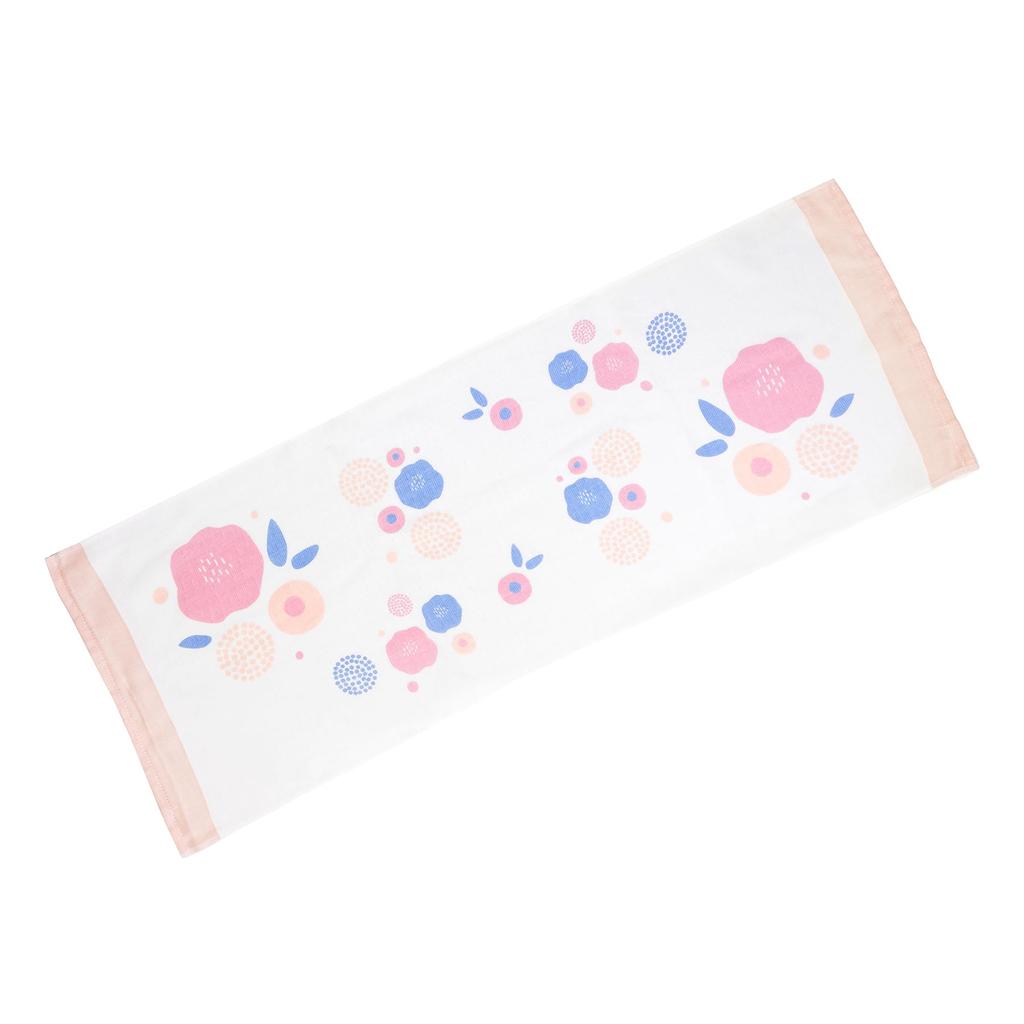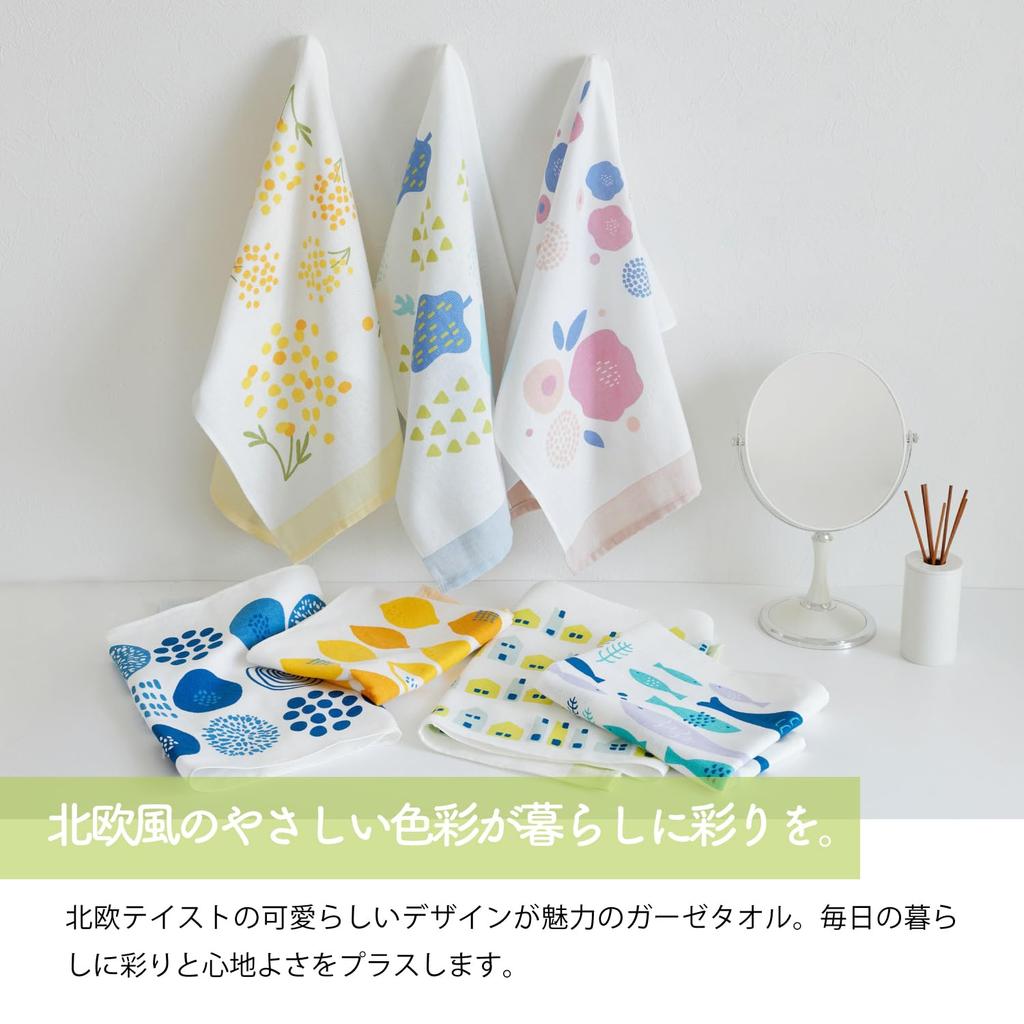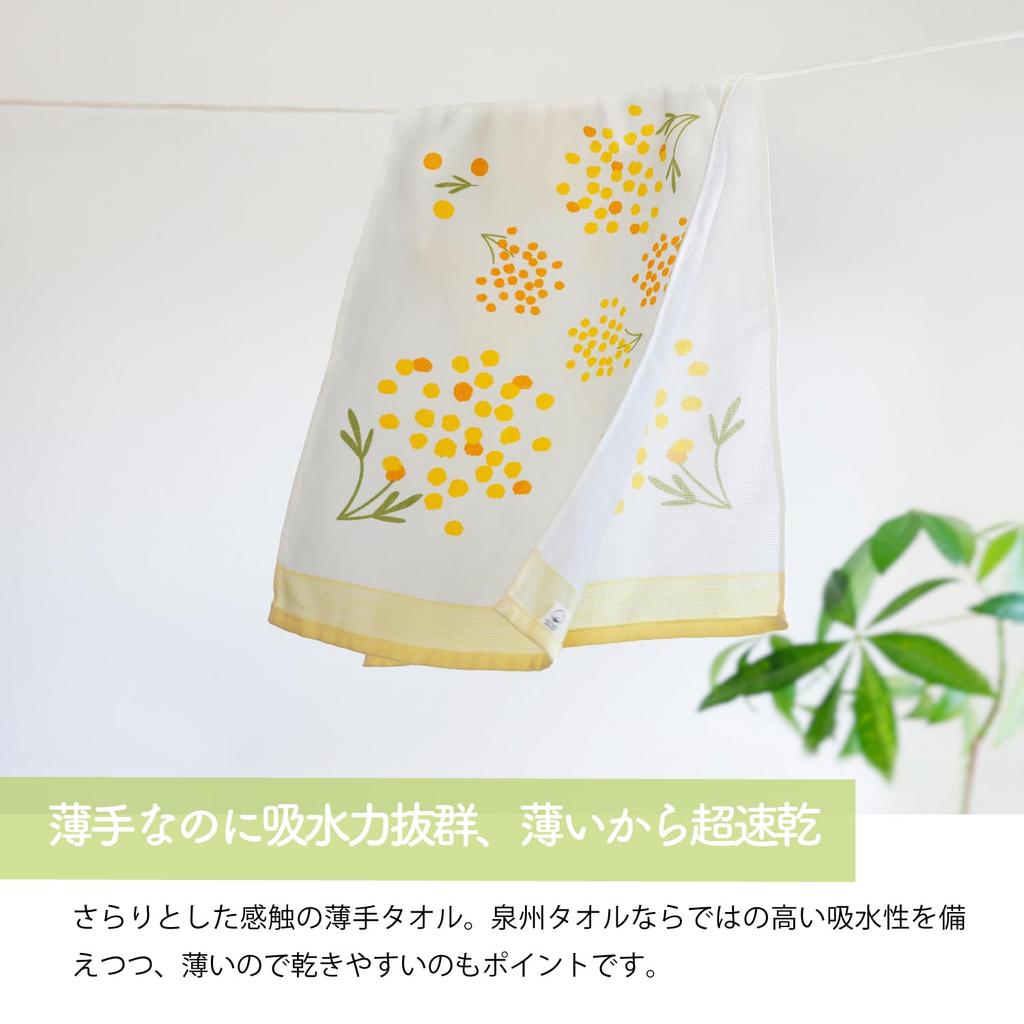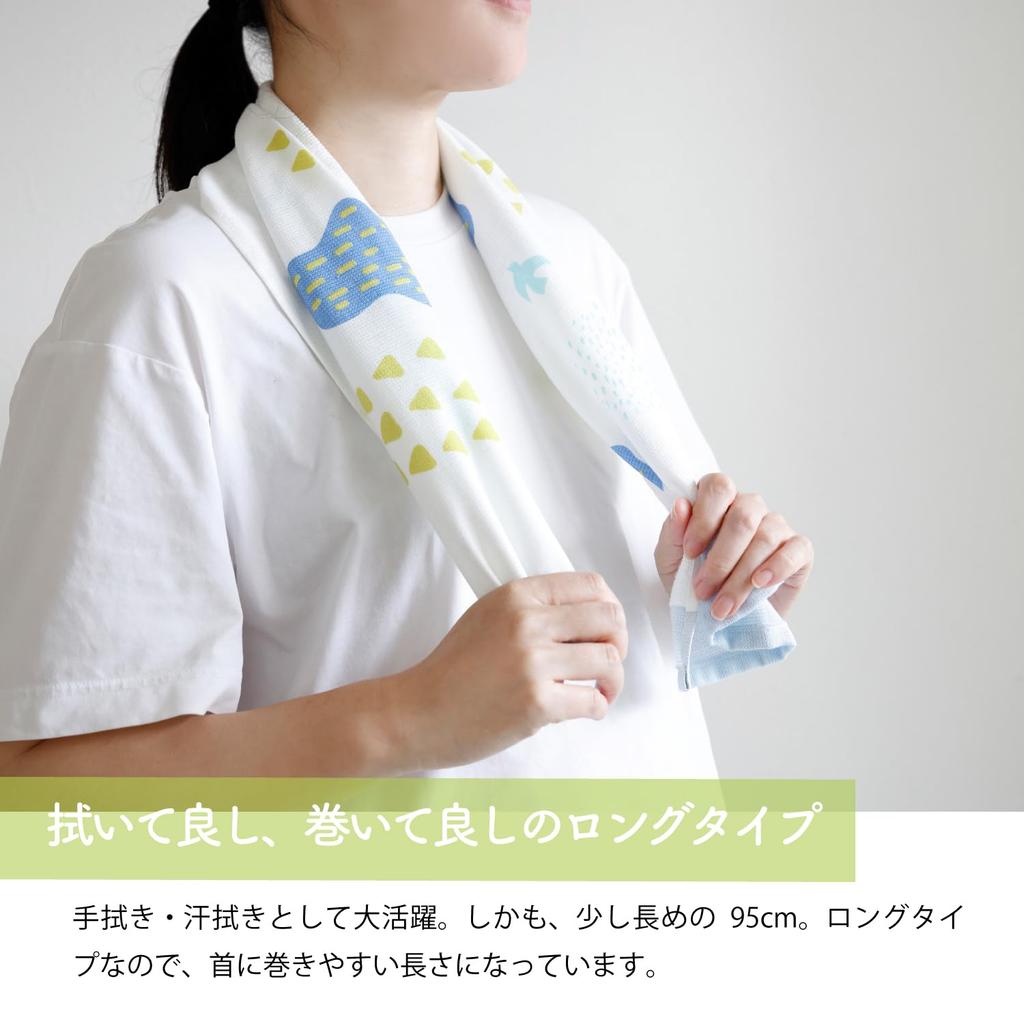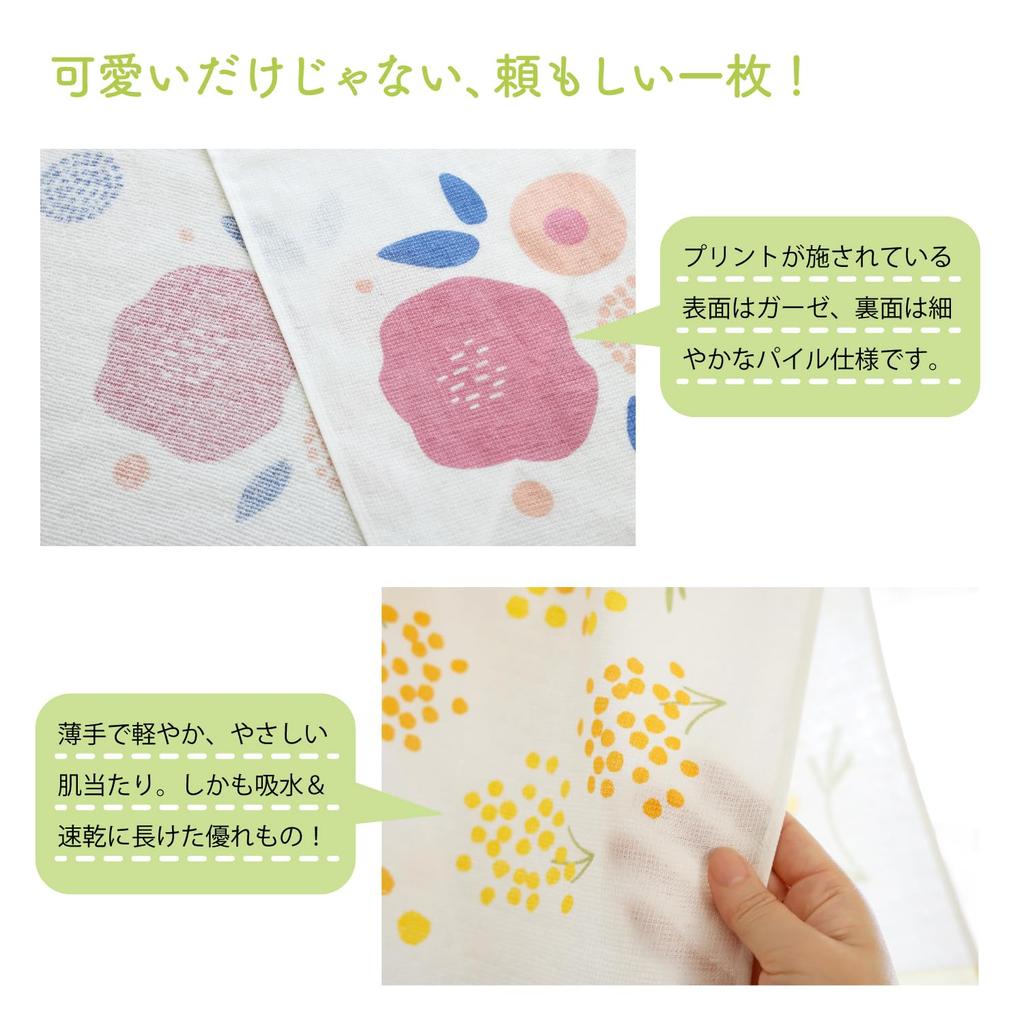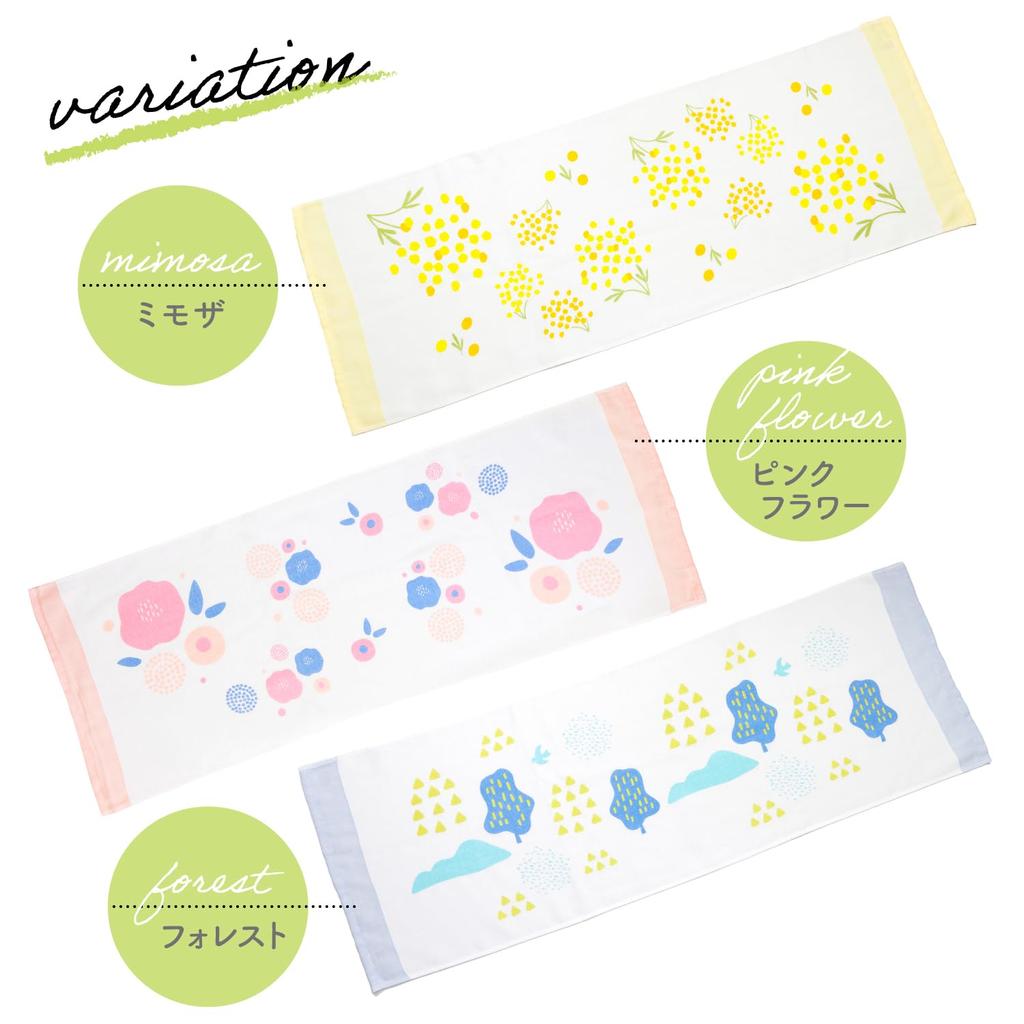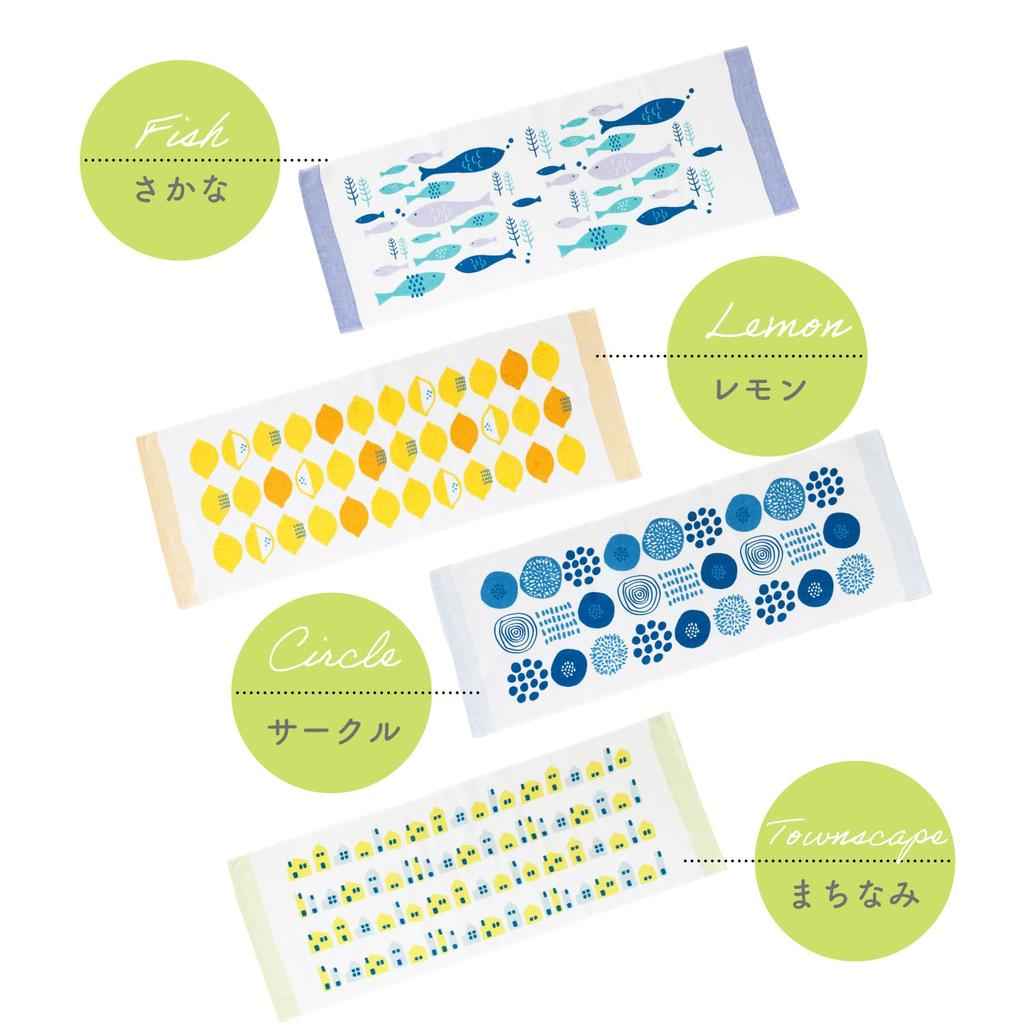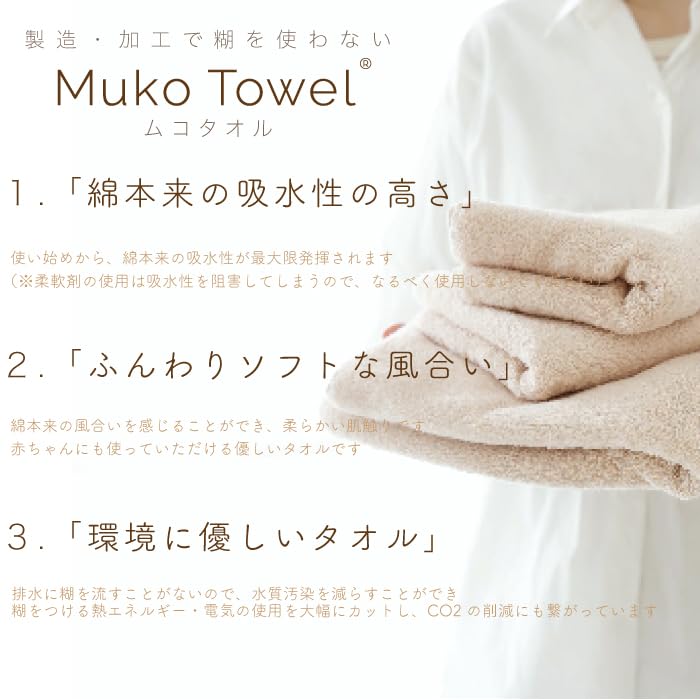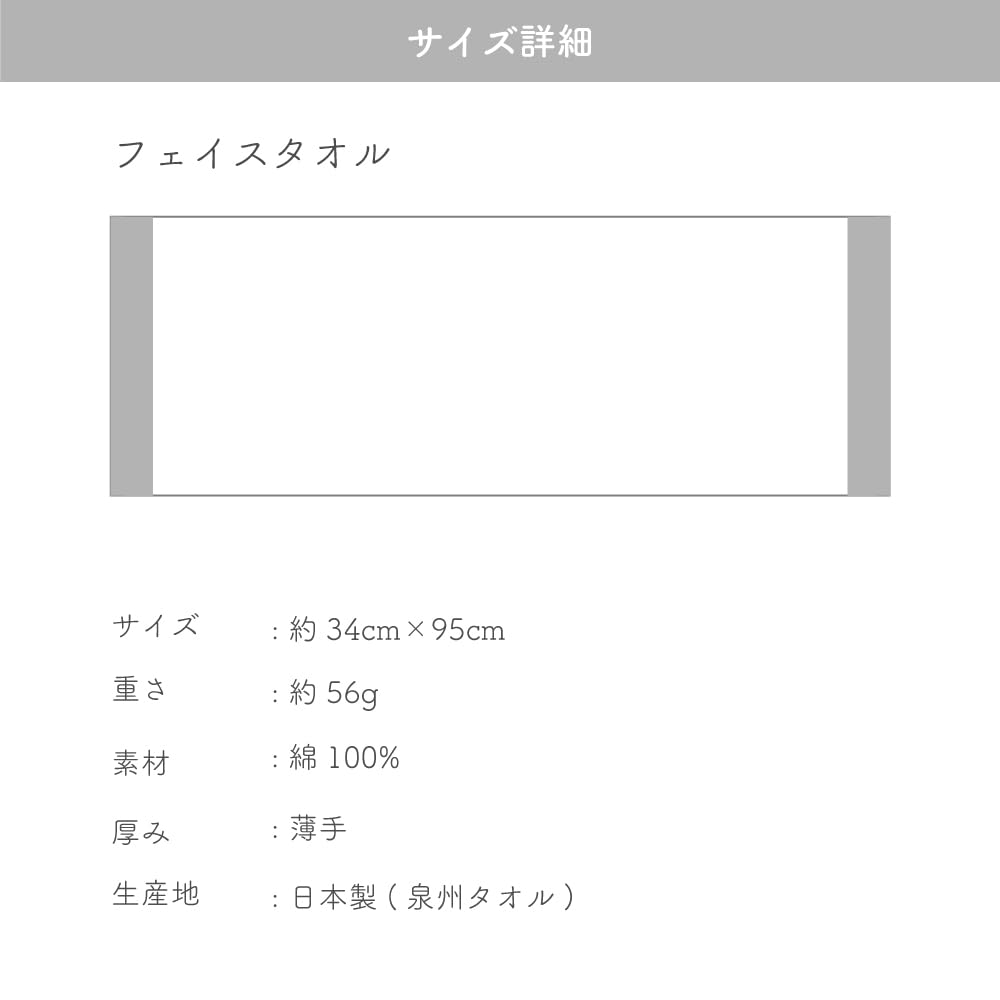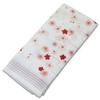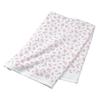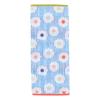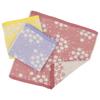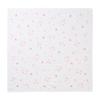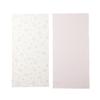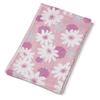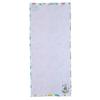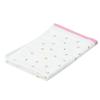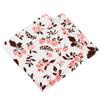[1 Face Towel] Made in Japan (Senshu Towel) Weight: 56g (per towel) Size: Approx. 34cm x 95cm (per towel) Material: 100% Cotton
[Stylish Scandinavian-style design] Variations of colors and patterns include the vibrant yellow Mimosa, the blue Forest that evokes the tranquil forests of Scandinavia, and the adorable Pink Flower with a motif of blooming flowers. A range of cute designs to brighten up your life.
[Thin yet highly absorbent, it dries super fast] This thin towel has a gauze surface and a fine, dense pile backing, resulting in a smooth, lightweight feel. It boasts the high absorbency you expect from Senshu towels, while its thinness makes it easy to dry. It's a long towel measuring 95cm long. It's perfect for wiping hands and sweat, and is long enough to easily wrap around your neck. It's also compact and not bulky when folded. It can be used in a variety of situations, including everyday use, sports, and travel.
[Senshu towels are characterized by their excellent absorbency] After weaving, the cotton is washed to remove oils, impurities, and starch, resulting in superior absorbency right from the start. *Please avoid using fabric softener as it inhibits the towel's natural absorbency.
[Made in Japan] Made with 100% yarn from the domestic spinning manufacturer KB Tsuzuki. KB Tsuzuki yarn is made in Izumo City, Shimane Prefecture, famous for Izumo Taisha Shrine. This is a 100% Japanese-made towel, from the yarn to the finish.
[Muko Towels that care for your skin and the environment] While regular towels require a coating of starch to give the cotton thread strength, Nitta Towel produces "Muko Towels" (glue-free towels) that are woven without starch. By eliminating the starch application process during the manufacturing process, the cotton's inherent excellent absorbency is preserved. Compared to regular towels, they have a soft texture that feels pleasant against the skin. In addition, because there is no starch removal process, no starch is mixed into wastewater, reducing water pollution. Additionally, because there is no starch application process, there is a significant reduction in the use of electricity and heat energy, which also leads to a reduction in CO2 emissions.
1









